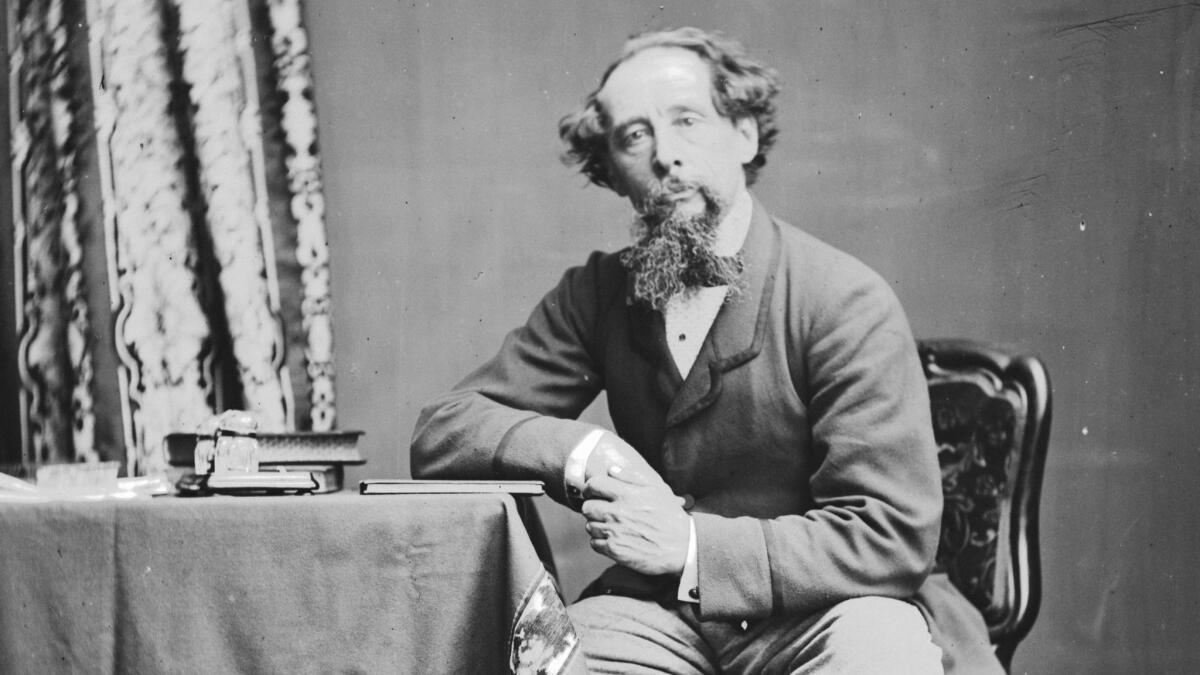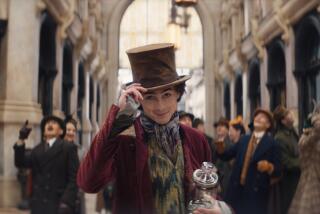From page to screen, the spirit of Charles Dickens’ ‘A Christmas Carol’ is a perennial favorite of the season
In 1843, Charles Dickens wrote the classic “A Christmas Carol” in a mere six weeks. In it, the British author, suffering from a career slump — at age 31! — redefined the way we think about the holiday season, reminding people that caring for your fellow humans is as central to the Christmas spirit as religious tradition or Santa Claus.
That’s the story at the heart of “The Man Who Invented Christmas,” a whimsical new film written by Susan Coyne and directed by Bharat Nalluri, that looks at Dickens’ creative process with a resolutely noncynical sensibility.
Opening Wednesday , the film is based on historian Les Standiford’s 2008 nonfiction work “The Man Who Invented Christmas: How Charles Dickens’s A Christmas Carol Rescued His Career and Revived Our Holiday Spirits.” Coyne discovered the book nearly eight years ago, , thanks to producer Robert Mickelson, and was immediately struck by the modernity of Dickens’ desire to re-ignite his career.
She also found something compelling in looking at the author during a period of his life that wasn’t marked by darkness or the sorts of womanizing and drinking issues that stereotypically plague great writers.
“We have this image of Charles Dickens being very forbidding and a statesman of English letters and very serious,” Coyne notes. “But he was this very attractive, extremely lively, funny, energetic, contradictory person I hadn’t known about until I was reading the book.”
At first, the best means of adapting the work weren’t clear to Coyne. The creative process doesn’t always make for great film visuals, so she needed to find a way to bring Dickens’ internal struggle to life on-screen. The solution was to externalize the characters, allowing Dickens, played in the film by Dan Stevens, to converse with the likes of Ebenezer Scrooge (Christopher Plummer). The film is both Dickens’ real journey to write “A Christmas Carol” and a re-enactment of certain key scenes from the novel.
“A lot of writers sit and just write, but Dickens was a failed actor, and he used to get up and act out all the parts,” Coyne says. “He would talk to himself in the mirror in funny voices. He’d walk around the city inventing conversations. He had this very physical imagination. That’s what gave me the idea of having the characters come to life in his room. He really thought of them as the children of his brain.”
For Nalluri, who has been involved with the project for more than five years, it was important to ensure that the audience didn’t feel stuck with Dickens at a desk. The director wanted to bring a dynamic feeling to the film, which comes through in both his camera work and in Stevens’ energetic performance.
“There’s a couple scenes where he’s writing, but we fought against that,” Nalluri says. “We said, ‘How can we dramatize an internal struggle?’ Luckily, he’s surrounded by his own characters who are emphasizing his writer’s block without him having to be sat there by himself drinking a glass of whiskey.”

The production of “The Man Who Invented Christmas” mirrors Dickens’ own creative journey. The film was shot in a tight six weeks in Dublin, split between December 2016 and January 2017. Plummer was put forth early on to play John Dickens, Charles’ father, but that role eventually went to Jonathan Pryce. When Nalluri asked Plummer if he’d be interested in playing Scrooge, the answer was a quick and resounding, “Yes!”
“He’s got a really naughty twinkle about him, and all great Scrooges do,” Nalluri says of Plummer. “They rediscover the twinkle, in a way, in the character. He comes on set with a lot of power and a lot of weight — that’s instantly Scrooge, in a way.”
“A Christmas Carol” has been adapted for film dozens of times, from silent screen versions in the early 20th century to “The Muppet Christmas Carol” in 1992. It’s a story that continues to resonate year after year, one that appeals to all generations, potentially because there is a tangible sense of humor in the original novel. It’s a good reminder of something bigger than ourselves.
“I come from a family that really didn’t celebrate Christmas, so I didn’t know what Christmas was,” says Nalluri, who was born in India and raised in northern England. “I was surrounded by families that did Christmas in the north of England — they love Christmas — and I could see my friends having a great time, and I couldn’t understand what it was.
“I read ‘A Christmas Carol,’ and it told me what Christmas is. It’s not about a religious Christmas. It’s about the subtext of what Christmas is, which is: be kind. Be good to your fellow human beings. In truth, that’s across all religions and all faiths. It’s a key human element.”
“When we say ‘The Man Who Invented Christmas,’ he didn’t actually, but he really thought of this idea of the one time of the year when we stop and look at, as he says in the book, our fellow humans as if they were really fellow passengers to the grave,” Coyne adds. . “That’s transforming. We can all afford to go back to that. Now, more than ever, it seems that we live in a very mean-spirited world, and it feels very much like Dickens’ Victorian London. I think there’s something just lovely and celebratory of that idea.”
More to Read
Only good movies
Get the Indie Focus newsletter, Mark Olsen's weekly guide to the world of cinema.
You may occasionally receive promotional content from the Los Angeles Times.






